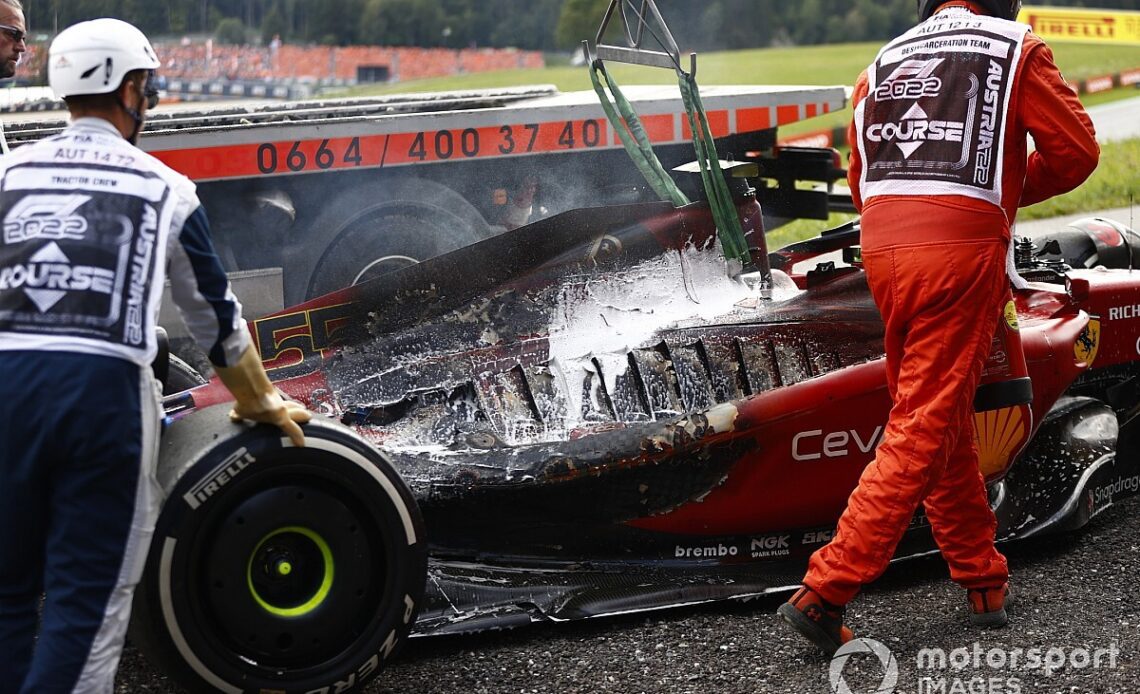Sainz was forced out of the Spielberg race in the closing stages after suffering a catastrophic engine failure, which triggered a blaze on his Ferrari.
The flames took hold of the car, and Sainz was one of several people suggesting that the incident could have been dealt with more swiftly.
Speaking afterwards, Sainz said: “I was calling the marshals to come and help me, to put something on the tyres to stop the car rolling down but I think the whole process was a bit slow.
“And at some point, there was so much fire that I had to really get a move on and jump out independently. I think it was just at that time that the first marshal arrived and stopped the car.”
With the Sainz incident having prompted debate, the official safety crew at the Austrian track has elected to issue a statement explaining why all procedures were followed correctly – even if it appeared that things had been slow.
Primarily, it stated that the first issue at stake was the fact that marshals are not allowed to attend to incidents until they have been given the go-ahead by race control.
“After the terrible accident of Jules Bianchi in 2014, the FIA’s rules regarding recoveries and interventions on the track have been drastically tightened,” said the statement.
“Intervention is only allowed after instructions from race control. On the one hand, this naturally increases the safety of the drivers and marshals, but on the other hand, it has the disadvantage that interventions take a little longer.”
The marshals also explained that there were a set of unique circumstances which meant the fire had to be dealt with by a vehicle rather than fire extinguishers carried by individuals.
“Several unfortunate circumstances came together,” they added. “The place where Sainz parked the Ferrari was not visible from the marshals’ stand. They received instructions over the radio to go to the car with fire extinguishers, and when they saw the situation, they made the decision to call in the fire engine (S-car).
“This decision had to be made within seconds and, in retrospect, was absolutely correct. If you remember [Romain] Grosjean’s accident, in a situation like that, hand-held fire extinguishers are absolutely not enough. Therefore, the fire extinguisher was turned off and the car was [left], which led to that unfortunate image on TV of the marshal “running away”.
“Another problem was that Sainz, understandably, became nervous in the vehicle and went off the brakes too…
Click Here to Read the Full Original Article at Motorsport.com – Formula 1 – Stories…

